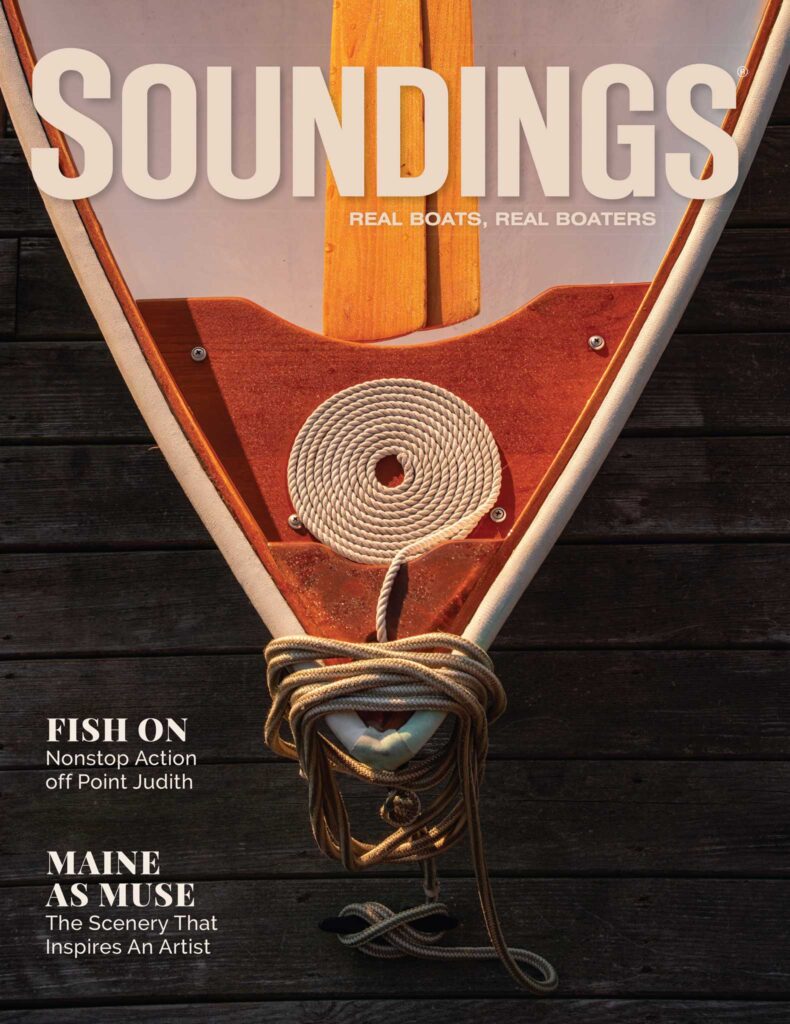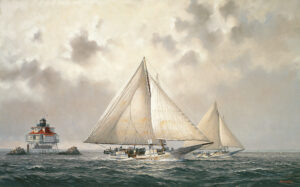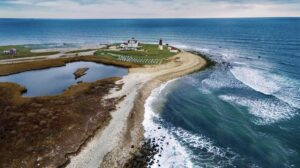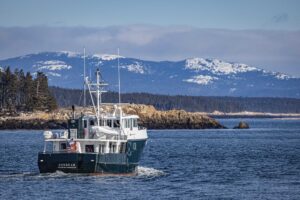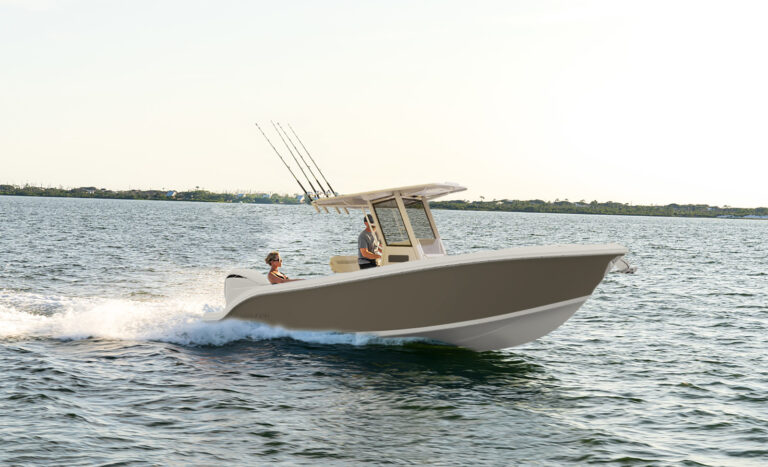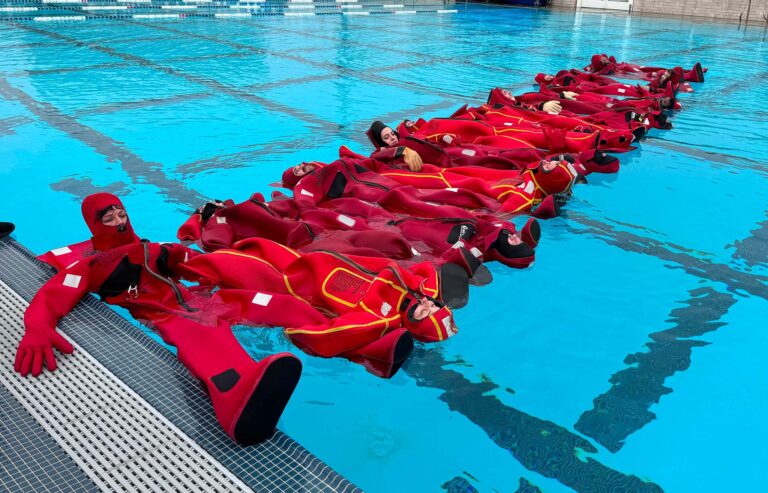There’s a lot happening in propulsion these days, from joysticks to outboards and inboards
If it’s been a while since you last took a close look at engines and helm systems, you’re in for some surprises at the winter boat shows.

During the past year or so there have been major innovations in joystick systems, diesel and gas inboards and sterndrives. Along with those changes, 4-stroke outboards and pod drives continue to evolve. Most recently, the marriage of joystick helm control to outboards has dominated news from the propulsion segment.
Mercury and Yamaha have emerged as the first production engine companies to offer joystick control for outboard boats. Yamaha’s Helm Master hits the market this spring. Mercury Marine debuted its Joystick Piloting for outboards last fall; the system is now available. Both systems work with each manufacturer’s electronically controlled high-horsepower 4-strokes. Helm Master will be available only through certified boatbuilders and is not available for repowering. Joystick Piloting can be installed with complete repowering jobs. www.mercurymarine.com. www.yamahaoutboards.com
Also for repowering, you can turn to Teleflex and its Optimus 360 — a joystick and steering system for mechanically controlled outboards. www.teleflexmarine.com
There is also joystick technology for boats with conventional shaft-drive inboards. Caterpillar this year introduced the 360 Precision Control System. “It’s essentially a joystick system and all of the integrated components and controls that would be necessary in a yachting application — the joystick, throttle controls, harnesses and hydraulic thrusters,” says Bruce Strupp, manager of propulsion solutions for Caterpillar Marine Power Systems.

The 360 Precision Control System is designed for boats from about 55 feet and up with twin engines packing 1,000 hp or more, Strupp says. “Engines that are 1,000 hp and lower are going to go with the pod solution,” he says. The engines would start with the Caterpillar C18 and get larger as needed, he says. www.cat.com
Yacht Controller is a wireless docking system that electronically interfaces with a boat’s engines, transmissions, thrusters and anchor windlass. It gives the owner who has conventional inboards precise low-speed maneuverability using a wireless remote control.
The company now has a fixed-mount helm joystick that it will introduce at the Miami International Boat Show — the Yacht Controller JCS (Joystick Control System), says company president Gerard Berton. JCS can be used alone or integrated with the wireless system, he says. “Just hit a button, and it will take you from wireless to fixed joystick,” Berton says. www.yachtcontroller.com
Xenta Systems’ Vessel Maneuvering Assistant Plus relies on a wired joystick and uses a bow thruster to deliver pod-type maneuverability to inboard boats. www.xentas.com.

The Hinckley Co. was one of the first boatbuilders to develop joystick control with its JetStick and waterjet drives. The company continues to improve the JetStick and showed the next generation of the system on its Picnic Boat MKIII at the Fort Lauderdale show last October. The builder also is unveiling a wireless remote joystick called the PalmStick. www.hinckleyyachts.com
Outboards
Looks like we’ll find out at the Miami show whether more next-generation Suzuki outboards are on the way. The company declined to release specifics, but said in mid-January that it has some good news for the owners of boats with engines in three horsepower ranges: about 20 hp, 40 to 60 hp and 150 to 175 hp.
Suzuki cranked out next-generation 4-strokes from 15 to 250 hp last summer. The 250AP is a second-generation engine with a larger engine block (4 liters instead of 3.6), better midrange performance with Suzuki’s “Lean Burn” technology and a gearcase that can be electronically programmed for right or left prop rotation, Suzuki says. The other engines are the DF15A and 20A and the DF115A and 140A. The 15A, 20A and 250AP are completely new engines, while the 115A and 140A are based on the same design as their predecessors. www.suzukimarine.com
Along with its Helm Master, Yamaha last fall unveiled 4-cylinder 150- and 200-hp outboards. The F200 is the lightest 4-cylinder 4-stroke on the market, says Yamaha Marine Group communications manager Martin Peters. The F200 will excel on small and midsize center consoles, bay boats and hybrids, and pontoons and aluminum boats, according to Yamaha.
“The 200 makes tremendous sense because there are so many boats that can take that kind of power and benefit from a lightweight 200, as opposed to a heavier V-6,” Peters says. “It is also a great motor for repowering because it fits on 26-inch centers. It is a narrow motor and easily could replace a lot of 2-strokes in the marketplace right now.”
At 487 pounds, the F200 weighs 119 pounds less than Yamaha’s V-6 F200 and 14 pounds more than its 2-stroke Z200 HPDI outboard.
Yamaha also unveiled a 150-hp 4-stroke — the V MAX SHO 150. This outboard gives boaters the kind of torque and acceleration out of the hole associated with 2-strokes, Peters says. The engine will be a good fit for bass boats and flats boats, he says.
BRP has a new 135-hp, high-output 2-stroke — the Evinrude E-TEC 135 H.O. — that became available this winter. The engine will be a good fit in single applications for small center consoles (under 22 feet or so), flats boats, power cats, deckboats, fish-and-ski runabouts and bowriders, says Evinrude assistant product manager Eric Olson. Twins will excel on larger center or side console boats, as well as power cats and pontoons.
Mercury’s 150 FourStroke is the lightest 150-hp 4-stroke on the market, according to the manufacturer. The 455-pound, 3-liter, 4-cylinder outboard weighs 55 pounds less than its predecessor — the 4-cylinder Verado 150 — and can be used to power a variety of boats, from inshore bay boats and RIBs to offshore center consoles and cruising boats, says Mercury communications director Steve Fleming. It also fits the bill for repowers, weighing only 24 pounds more than the 150-hp Mercury OptiMax 2-stroke, says Fleming.

Lehr’s first propane-powered machines were a string trimmer, a leaf blower and a lawn mower. In early 2012 it introduced its first propane-powered outboards — 2.5- and 5-hp engines. Why the jump from lawn equipment to outboards? Company founder Bernardo J. Herzer has a background in oceanographic research and has been converting small engines to operate on propane since he was a teenager. Lehr also offers a 9.9-hp propane outboard.
Looking for zero-emissions boating? German manufacturer Torqeedo has introduced the Deep Blue electric outboard. Powered by lithium-ion batteries, the 80-hp equivalent engine includes a computer that calculates range using GPS and displays travel time and direction to waypoints.
Torqeedo also offers smaller electric outboards from 1 to 15 hp. “It’s quite a jump in horsepower,” says Steve Trkla, president of Torqeedo Inc., the company’s U.S. office. “We wanted to continue to keep our lead in electric propulsion in general. We went for that sweet spot, 80 to 100 hp.”
The Deep Blue outboard, which includes a battery charger, throttle, connection box, computer with GPS and display, prop and hub) is $20,000. Banks of two, three and four batteries are $32,998, $49,497 and $65,996, respectively. A minimum of two batteries is required. The batteries are backed by a 9-year capacity warranty.
The Deep Blue will be installed on a Zodiac RIB at the Miami show. Plus, Torqeedo’s indoor display will feature what Trkla calls a “live motor system.”
Deep Blue is sold in the United States through Zodiac of North America. www.zodiacmilpro.com, www.torqeedo.com
See related article:
– In the engine room: I/Os and INBOARDS
March 2013 issue

